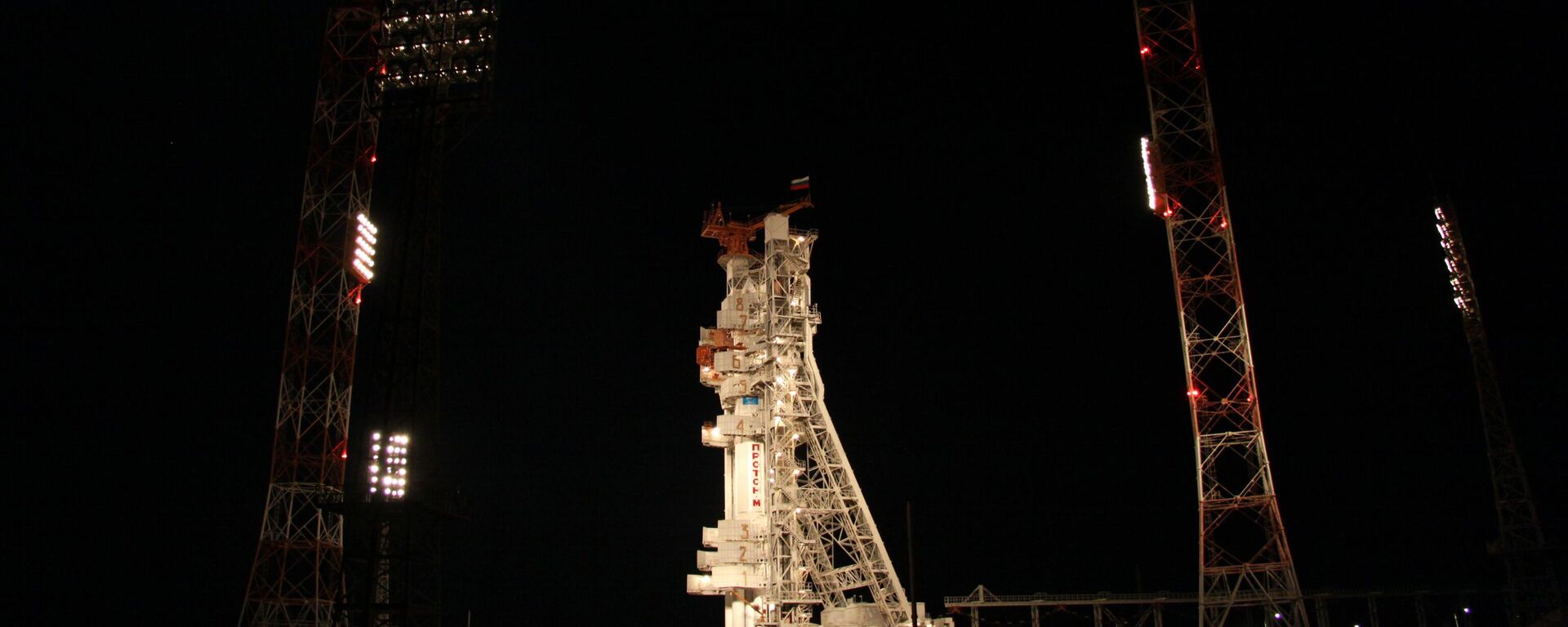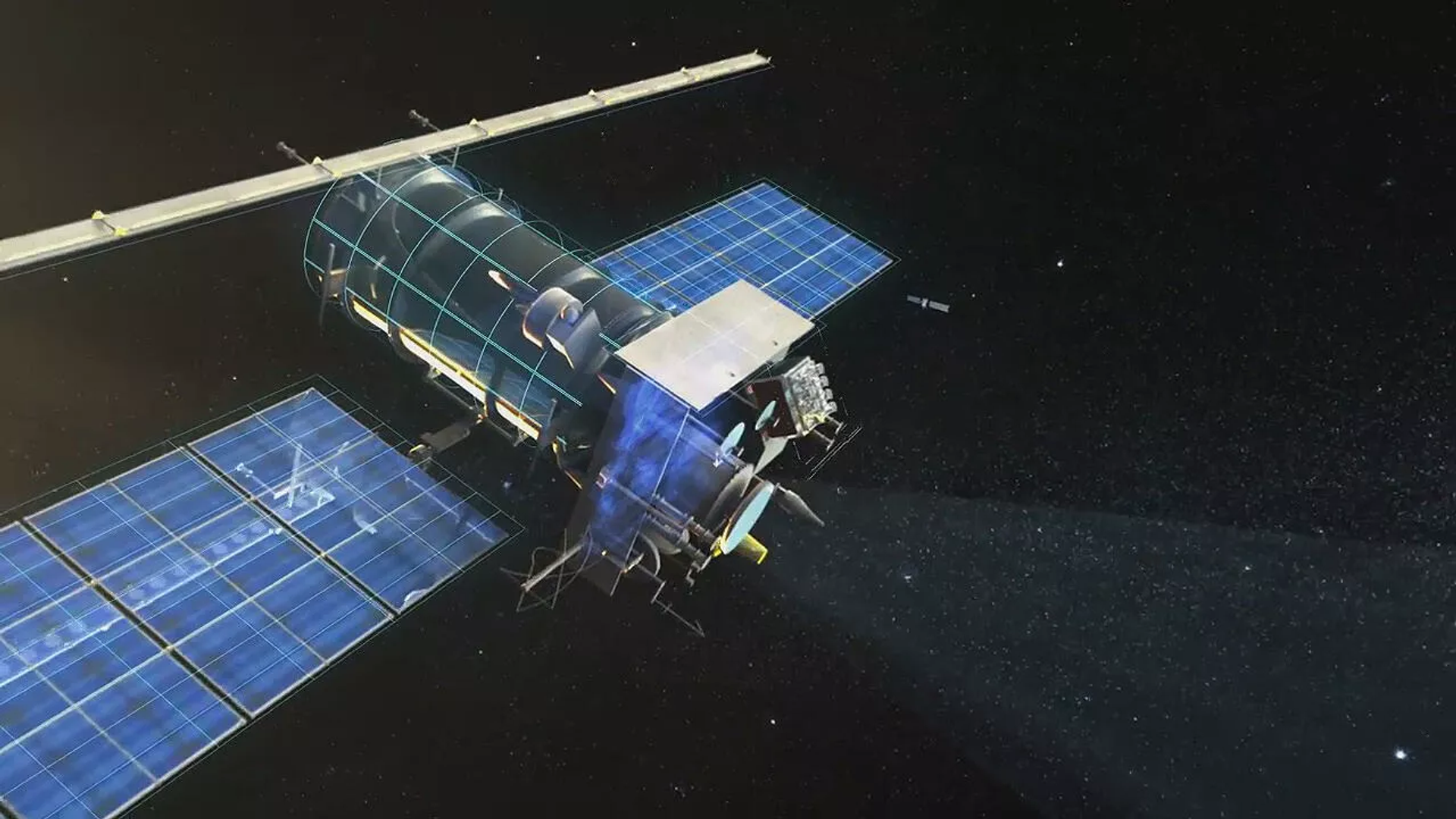https://sputnikglobe.com/20231103/russian-scientists-discover-effects-of-thermal-shock-on-satellites-motion-1114687619.html
Russian Scientists Discover Effects of Thermal Shock on Satellites' Motion
Russian Scientists Discover Effects of Thermal Shock on Satellites' Motion
Sputnik International
Scientists from the Samara National Research University (Samara University) have developed a method for calculating thermal shock risks for small spacecraft a.k.a SmallSats.
2023-11-03T10:23+0000
2023-11-03T10:23+0000
2023-11-03T10:23+0000
beyond politics
science & tech
satellite
russia
samara
space exploration
https://cdn1.img.sputnikglobe.com/img/107929/50/1079295051_0:0:1280:720_1920x0_80_0_0_b4865d1561da5151710c7e295350f82b.png
According to the researchers, the calculations would simplify satellite operations and correct orbital motion models. The calculations would also facilitate the development of small technology satellites. Research published in Microgravity Science and Technology.https://doi.org/10.1007/s12217-023-10049-wExperts note that SmallSats have a number of advantages. Unlike medium-class structures and orbital stations, they are cheaper and do not take long to build. In addition, a large number of such spacecraft can be launched simultaneously.At the same time, their effective use requires additional studies to evaluate their performance in specific environments. One such performance characteristic is thermal shock. Its influence on space and orbital stations has been neglected until now, as it was considered rather insignificant.However, the 2017 ISS (International Space Station) experiment using advanced ultra-thin solar ROSA (Roll-Out Solar Array) panels demonstrated significant levels of thermal shock variations. At the end of the experiment, the ROSA panel could not fold back due to severe vibrations. Therefore, it had to be detached from the ISS.According to the Samara University scientists, their new method of assessing the need to account for thermal shock perturbations affecting satellite motion can improve the efficiency of SmallSats.The method helps designers determine whether it is feasible to account for the thermal shock factor. In addition, satellite orbit models can be adjusted during the design phase to effectively accomplish specific tasks. For example, obtaining higher resolution images from remote sensing of the Earth.The scientists say the results can be used in the development of small technology satellites.Prof. Sedelnikov noted that mathematical descriptions of thermal shock require complex calculations. There are cases when such formulas are indispensable, but normally one can do without them.The research was part of a government contract with the Ministry of Education and Science of the Russian Federation. Ultimately, the scientists plan to develop a more accurate description of the thermal shock process and its impact on the performance of SmallSats. For instance, solar panels may lose their stability when exposed to thermal shock.Samara University is a participant of the "Priority-2030" program, an esteemed federal initiative aimed at bolstering Russian universities as part of the broader "Science and Universities" project on a national level.
https://sputnikglobe.com/20231002/russian-space-agency-creates-small-satellite-constellation-to-monitor-earths-entire-surface-1113857143.html
https://sputnikglobe.com/20230723/roscosmos-expects-international-rules-of-space-traffic-to-be-adopted-within-5-years-1112092630.html
https://sputnikglobe.com/20230526/russias-satellites-will-be-taking-earths-images-with-google-maps-resolution---developer-1110595306.html
russia
samara
Sputnik International
feedback@sputniknews.com
+74956456601
MIA „Rossiya Segodnya“
2023
Sputnik International
feedback@sputniknews.com
+74956456601
MIA „Rossiya Segodnya“
News
en_EN
Sputnik International
feedback@sputniknews.com
+74956456601
MIA „Rossiya Segodnya“
Sputnik International
feedback@sputniknews.com
+74956456601
MIA „Rossiya Segodnya“
thermal shock, russian science, samara university, russian researchers, russian scientist, scientists, satellite operations, small technology satellites, small satellites, science and universities, priority-2030, russian universities, smallsats, space technology, space technology
thermal shock, russian science, samara university, russian researchers, russian scientist, scientists, satellite operations, small technology satellites, small satellites, science and universities, priority-2030, russian universities, smallsats, space technology, space technology
Russian Scientists Discover Effects of Thermal Shock on Satellites' Motion
Scientists from the Samara National Research University (Samara University) have developed a method for calculating thermal shock risks for small spacecraft a.k.a SmallSats.
According to the researchers, the calculations would simplify satellite operations and correct orbital motion models. The calculations would also facilitate the development of small technology satellites. Research published in Microgravity Science and Technology.
Experts note that SmallSats have a number of advantages. Unlike medium-class structures and
orbital stations, they are cheaper and do not take long to build. In addition, a large number of such spacecraft can be launched simultaneously.
At the same time, their effective use requires additional studies to evaluate their performance in specific environments. One such performance characteristic is thermal shock. Its influence on space and orbital stations has been neglected until now, as it was considered rather insignificant.

2 October 2023, 15:08 GMT
However, the 2017 ISS (International Space Station) experiment using advanced ultra-thin solar ROSA (Roll-Out Solar Array) panels demonstrated significant levels of thermal shock variations. At the end of the experiment, the ROSA panel could not fold back due to severe vibrations. Therefore, it had to be detached from the ISS.
According to the
Samara University scientists, their new method of assessing the need to account for thermal shock perturbations affecting satellite motion can improve the efficiency of SmallSats.
The method helps designers determine whether it is feasible to account for the thermal shock factor. In addition, satellite orbit models can be adjusted during the design phase to effectively accomplish specific tasks. For example, obtaining higher resolution images from remote sensing of the Earth.
The scientists say the results can be used in the development of small technology satellites.
"Certainly, other research teams have similar practices. However, our method is an attempt at a comprehensive approach to the thermal shock factor, which is a key feature of SmallSats," said Prof. Andrey Sedelnikov of the Samara University Space Engineering Department.
Prof. Sedelnikov noted that mathematical descriptions of thermal shock require
complex calculations. There are cases when such formulas are indispensable, but normally one can do without them.
The research was part of a government contract with the Ministry of Education and Science of the Russian Federation. Ultimately, the scientists plan to develop a more accurate description of the thermal shock process and its impact on the performance of SmallSats. For instance, solar panels may lose their stability when exposed to thermal shock.
Samara University is a participant of the
"Priority-2030" program, an esteemed federal initiative aimed at bolstering Russian universities as part of the broader "Science and Universities" project on a national level.





